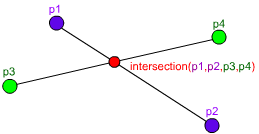The OR ( || ) operator in AS3
Tuesday, September 21st, 2010Here’s a quick tip: the OR operator ( || ) in AS3 does not return true if either condition evaluates to true; it returns the actual value of the first condition to evaluate to true.
What does that mean? Lets try an example:
This statement:
trace ( "foo" || "bar" );
will trace out the string “foo”, not “true” (in an if statement “foo” will evaluate to true).
This statement:
trace ( undefined || false || "bar" );
will trace out the string “bar”.
If no condition evaluates to true, it will return the last condition.
trace ( false || undefined || 0 || "" || NaN || null );
will trace out “null”.
This can be really handy when making sure variables are not uninitialized before using them.
Check out this example:
function doSomething(arr:Array, data:Object, path:String):void {
this.args = arr || [];
this.dataObject = data || {};
this.dataUrl = path || "http://default.url";
}
And even sexier (thanks MonkeyMagiic):
this.args ||= [];




